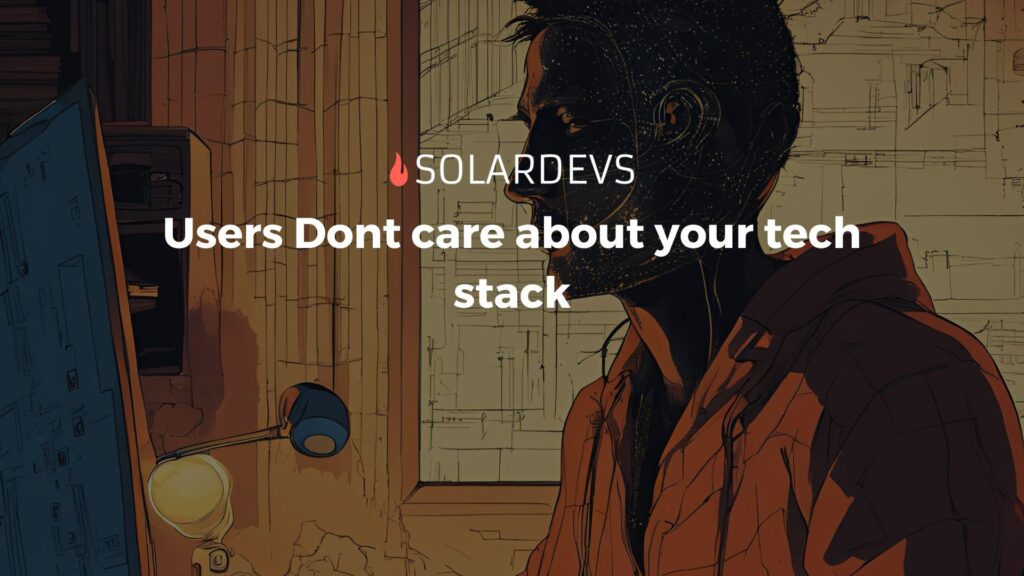The Trap of Falling in Love with a Tech Stack
When developing software it’s easy to get caught up in the hype of the latest frameworks, programming languages, and tools. The appeal of a new tech stack can be irresistible, promising to solve all your problems and catapult your project to success. However, this fascination can often lead to what we call the “trap of falling in love with a tech stack.”
Here’s the deal: Some developers become captivated with the technology itself, forgetting that the real magic lies in what it can do for users. They spend hours mastering the ins and outs of a new framework or integrating cutting-edge tools, sometimes neglecting the actual product development. Sure, staying up-to-date matters, but remember: Your ultimate mission is to deliver value to users.
The danger? Prioritizing the tech stack over the project’s core needs. It’s like choosing a flashy, untested tool just because it’s the cool kid on the block. Result? Longer development cycles, more bugs, and a product that leaves users disappointed.
What Matters to Users: Functionality and Speed
Users care about two things: Does your product work well, and does it work fast? They’re not losing sleep over whether your backend runs on the latest JavaScript framework or a NoSQL database. Nope. They want functionality and speed.
Functionality means solving real problems for users. Whether your app streamlines their workflow, provides killer insights, or simply entertains them, that’s what counts – regardless of the tech stack. So, focus on understanding user needs and crafting solutions that work.
Speed is non-negotiable. Slow apps, even if they’re technically advanced, drive users nuts. Optimize for performance – choose stable, battle-tested technologies over the flashy newbies.
Oldies but Goodies: Proven Technologies
While it’s tempting to always go for the latest and greatest technology, there’s a strong case to be made for relying on proven technologies. Established tools and frameworks have a track record of stability, reliability, and community support. They have been tested in various scenarios and are often more mature, with extensive documentation and resources available.
Using proven technologies can reduce development time and minimize risks. Developers are likely to be more familiar with these tools, leading to faster implementation and fewer errors. Additionally, established technologies tend to have larger communities, which means more available support, plugins, and third-party integrations.
Remember, successful products aren’t built on tech bling. They’re about delivering value. So, choose wisely, my friend.
What to Avoid: The Tech No-Nos
At Solardevs, we’ve got a blacklist of tech no-nos. These are the troublemakers – either due to security woes, unnecessary complexity, or just plain outdated vibes. Brace yourself:
- Java (It’s like that clingy ex who won’t let go.)
- Windows (As a server solution? Nah, we’re swiping left.)
- XML (It’s like reading hieroglyphics.)
- Flash (Remember those annoying pop-up ads? Yeah, that’s Flash.)
- Silverlight (Sounds fancy, but it’s a fading star.)
- Visual Basic (Old-school charm, but not for serious business.)
- Internet Explorer app (Let’s just say it’s not winning any popularity contests.)
Conclusion
In conclusion, while it’s important to stay informed about technological advancements, it’s crucial not to lose sight of what truly matters to users: functionality and speed. Falling in love with a tech stack can deviate focus from the core objectives of your project. By prioritizing user needs, measuring customer satisfaction, and opting for proven technologies, you can build products that not only work well but also delight your users. Remember, users don’t care about your tech stack; they care about how your product makes their lives easier and more enjoyable.
